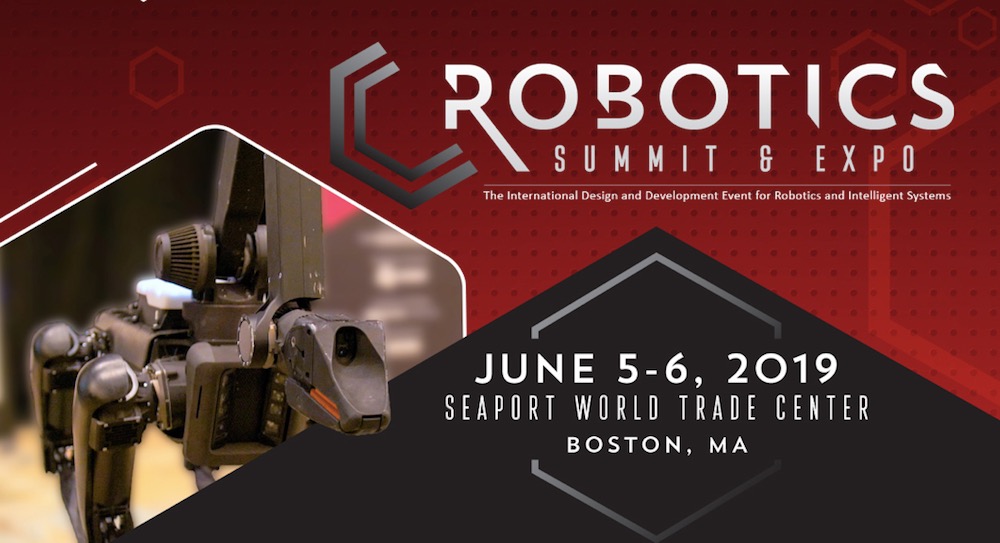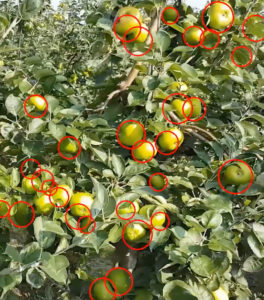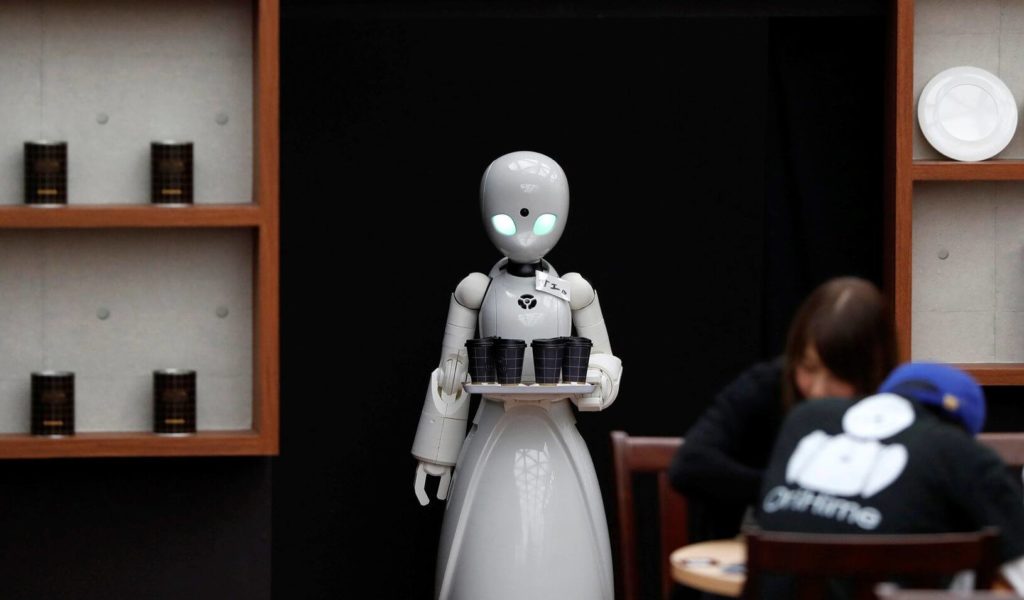平遥古城启用机器人导游
电动汽车的“中国式独大”
How sea slugs could lead to more energy-efficient robots
 Keynotes | Agenda | Speakers | Exhibitors | Register
Keynotes | Agenda | Speakers | Exhibitors | Register
What do pizza slices, sea slugs and one possible design for future soft-bodied robots have in common? They all have frilly surfaces, and new insights about the surprising geometry of frilly surfaces may help a future generation of energy-efficient and extremely flexible soft-body robots move.
The complex folds of a frilly surface like coral reefs or kale leaves is a surface mathematicians refer to as an “inflected nonsmooth surface.” It changes the direction in which it bends.
“People have looked at these hyperbolic surfaces for 200 years, but nobody has thought about the role of smoothness in relation to how these things move, their mechanics,” said University of Arizona mathematician Shankar Venkataramani. “Nobody saw a relevance to these things until now.”
Venkataramani will present his group’s research on nonsmooth surfaces, sea slugs and possible robotic applications at the 2019 American Physical Society March Meeting in Boston.
Until recently, Venkataramani said, physicists generally assumed that natural frills occur when the balanced forces between simultaneous bending and stretching of a sheet cause the surface to crumple. However, Venkataramani, in recent work with doctoral students John Gemmer and Toby Shearman and Hebrew University physicist Eran Sharon, showed that there can be nonsmooth surfaces that are simultaneously unstretched yet frilly.
“The idea that these frilly surfaces don’t have stretching in them, that was completely counterintuitive,” he said.

And, he noted, the research showed that changes from one form to another appear to require very little energy. This is key since the ability to change the geometry of surfaces has big implications for their strength and thus ability to act on the surroundings. Pick up a soggy slice of pizza and it creates a mess but “put a little curvature and it becomes stiff and you can eat it,” he said.
Having developed the mathematics to describe these surfaces, his group modeled nonsmooth thin films with six up-and-down portions and wondered how they would move.
“We realized that nature already solved the problem millions of years ago. Some sea slugs and marine worms use this geometry to get around,” Venkataramani said.
The challenge now, he said, is determining exactly how the distinctive swimming gait of these soft-bodied marine invertebrates, such as the Spanish dancer sea slug, is related to their nonsmooth geometry.
The answer may provide “a potential avenue for building soft robots that are energy-efficient and extremely flexible,” Venkataramani said.
Editor’s Note: This article was republished from the American Physical Society.
The post How sea slugs could lead to more energy-efficient robots appeared first on The Robot Report.
Mamut mobile robot automates data collection for farmers
Agriculture is a $5 trillion industry, and it’s ripe for automation. Cambridge Consultants today announced Mamut, an autonomous robot that explores crop fields, capturing data on health and yield at the level of individual plants and on a massive scale. By automating data capture, Mamut gives growers regular, precise and actionable information on their crops, enabling them to predict and optimize yields.
Agriculture is under pressure to increase efficiencies, producing greater yields with fewer inputs and less labor. To meet these demands, growers need precise information on crop growth and health throughout the growing season. Automation of the data collection process is essential to providing growers with information at scale.
Existing large-scale monitoring approaches use drones, which cannot capture information from beneath the crop canopy. Attempts to use ground-based monitoring have been limited by the requirement for additional infrastructure, such as cabling or radio beacons.
 Mamut is an AI-powered autonomous robotic platform. Equipped with an array of sensors, Mamut maps and navigates its surroundings without the need for GPS or fixed radio infrastructure. As it travels the rows of a field, orchard or vineyard, cameras capture detailed crop data at the plant level, enabling accurate predictions of yield and crop health.
Mamut is an AI-powered autonomous robotic platform. Equipped with an array of sensors, Mamut maps and navigates its surroundings without the need for GPS or fixed radio infrastructure. As it travels the rows of a field, orchard or vineyard, cameras capture detailed crop data at the plant level, enabling accurate predictions of yield and crop health.
Mamut integrates stereo cameras, LIDAR, an inertial measurement unit (IMU), a compass, wheel odometers and an on-board AI system that fuses the multiple sensor data inputs. This sophisticated blend of technologies enables Mamut to know where it is and how to navigate through a new environment, in real time.
“Mamut is a practical application of AI, meeting a real and pressing need, particularly for growers of specialty crops where failure carries a high cost,” said Niall Mottram, Head of Agritech, Cambridge Consultants. “AI systems are already being used to understand crop conditions, yield predictions and to enable weed identification, but our autonomous robotic platform can collect valuable and granular data below the canopy, where drones cannot see.
“This data enables farmers to treat each plant in their vineyard, orchard or field individually, and on the scale of massive industrial farming, optimizing yields and producing more output with less input.”
Mamut’s capability to perform simultaneous localization and mapping (SLAM), enabling the robot to react and learn from unstructured routes in real time, was developed in navigation trials through the twists and turns of a 12-acre maize maze at Skylark Garden Centre, and at Mackleapple’s orchard, both in Cambridgeshire, UK.
The Robot Report named Augean Robotics one of its 10 robotics startups to watch in 2019. Augean Robotics makes Burro, an autonomous mobile robot that follows people on a farm, moving up to 500 lbs of cargo around to free up workers to perform more valuable tasks. Burro can learn the routes it takes and re-run them autonomously. Augean is currently working with fresh fruit farmers. In December 2018, Augean took home top honors at the FBNFarmers Startup Competition by winning the Judge’s Choice Award.
 Keynotes | Agenda | Speakers | Exhibitors | Register
Keynotes | Agenda | Speakers | Exhibitors | Register
The post Mamut mobile robot automates data collection for farmers appeared first on The Robot Report.
可定制的超现实性爱机器人开始售卖
Fears of job-stealing robots are misplaced, say experts

Artificial intelligence will shift jobs, not replace them. | Reuters/Issei Kato
Some good news: The robots aren’t coming for your job. Experts at the Conference on the Future of Work at Stanford University last month said that fears that rapid advances in artificial intelligence, machine learning, and automation will leave all of us unemployed are vastly overstated.
But concerns over growing inequality and the lack of opportunity for many in the labor force — serious matters linked to a variety of structural changes in the economy — are well-founded and need to be addressed, four scholars on artificial intelligence and the economy told an audience at Stanford Graduate School of Business (GSB).
That’s not to say that AI isn’t having a profound effect on many areas of the economy. It is, of course. But understanding the link between the two trends is difficult, and it’s easy to make misleading assumptions about the kinds of jobs that are in danger of becoming obsolete.
“Most jobs are more complex than [many people] realize,” said Hal Varian, Google’s chief economist, during the forum, which was sponsored by the Stanford Institute for Human-Centered Artificial Intelligence.
Today’s workforce is sharply divided by levels of education, and those who have not gone beyond high school are affected the most by long-term changes in the economy, said David Autor, professor of economics at the Massachusetts Institute of Technology.
“It’s a great time to be young and educated. But there’s no clear land of opportunity” for adults who haven’t been to college, said Autor during his keynote presentation.
When predicting future labor market outcomes, it is important to consider both sides of the supply-and-demand equation, said Varian, founding dean of the School of Information at the University of California, Berkeley. Most popular discussion around technology focuses on factors that decrease demand for labor by replacing workers with machines.
However, demographic trends that point to a substantial decrease in the supply of labor are potentially larger in magnitude, he said. Demographic trends are also easier to predict, since we already know, aside from immigration and catastrophes, how many 40-year-olds will live in a country 30 years from now.
Comparing the most aggressive expert estimates about the impact of automation on labor supply with demographic trends that point to a workforce reduction, Varian said he found that the demographic effect on the labor market is 53% larger than the automation effect. Thus, real wages are more likely to increase than to decrease when both factors are considered.
Automation’s slow crawl
Why hasn’t automation had a more significant effect on the economy to date? The answer isn’t simple, but there’s one key factor: Jobs are made up of a myriad of tasks, many of which are not easily automated.
“Automation doesn’t generally eliminate jobs,” Varian said. “Automation generally eliminates dull, tedious, and repetitive tasks. If you remove all the tasks, you remove the job. But that’s rare.”
Consider the job of a gardener. Gardeners have to mow and water a lawn, prune rose bushes, rake leaves, eradicate pests, and perform a variety of other chores. Mowing and watering are easy tasks to automate, but other chores would cost too much to automate or would be beyond the capabilities of machines — so gardeners are still in demand.
Automation doesn’t generally eliminate jobs. Automation generally eliminates dull, tedious, and repetitive tasks. If you remove all the tasks, you remove the job. But that’s rare. –Hal Varian, chief economist, Google
Some jobs, including within the service industry, seem ripe for automation. However, a hotel in Nagasaki, Japan, was the subject of amused news reports when it was forced to “fire” its incompetent robot receptionists and room attendants.
Jobs, unlike repetitive tasks, tend not to disappear. In 1950, the U.S. Census Bureau listed 250 separate jobs. Since then, the only one to be completely eliminated is that of elevator operator, Varian observed. But some of the tasks carried out by elevator operators, such as greeting visitors and guiding them to the right office, have been distributed to receptionists and security guards.
Even the automotive industry, which accounts for roughly half of all robots used by industry, has found that automation has its limits.
“Excessive automation at Tesla was a mistake. To be precise, my mistake. Humans are underrated,” Elon Musk, the founder and chief executive of Tesla Motors, said last year.
 Keynotes | Speakers | Exhibitors | Register
Keynotes | Speakers | Exhibitors | Register
The pace of jobs change
Technology has always changed rapidly, and that’s certainly the case today. However, there’s often a lag between the time a new machine or process is invented and when it reverberates in the workplace.
“The workplace isn’t evolving as fast as we thought it would,” Paul Oyer, a Stanford GSB professor of economics and senior fellow at the Stanford Institute for Economic Policy Research, said during a panel discussion at the forum. “I thought the gig economy would take over, but it hasn’t. And I thought that by now people would find their ideal mates and jobs online, but that was wrong too.”
Consider the leap from steam power to electric power. When electricity first became available, some factories replaced single large steam engines on the factory floor with a single electric motor. That didn’t make a significant change to the nature of factory work, says Erik Brynjolfsson, director of the MIT Initiative on the Digital Economy. But when machinery throughout the factory was electrified, work changed radically.
The rise of the service sector
Employment in some sectors in which employees tend to have less education is still strong, particularly the service sector. As well-paid professionals settle in cities, they create a demand for services and new types of jobs. MIT’s Autor called these occupations “wealth work jobs,” which include employment for everything from baristas to horse exercisers.
The 10 most common occupations in the U.S. include such jobs as retail salespersons, office clerks, nurses, waiters, and other service-focused work. Notably, traditional occupations, such as factory and other blue-collar work, no longer make the list.
Looming over all of the changes to the labor force is the stark fact that birth rates in the U.S. are at an all-time low, said Varian. As has been widely reported, the aging of the baby boom generation creates demand for service jobs but leaves fewer workers actively contributing labor to the economy.
Even so, the U.S. workforce is in much better shape than other industrialized countries. The so-called dependency ratio — the proportion of people over 65 compared with every 100 people of working age — will be much higher in Japan, Spain, South Korea, Germany, and Italy by 2050. And not coincidentally, said Varian, countries with high dependency ratios are looking the hardest at automating jobs.
As the country ages, society will have to find new, more efficient ways to train and expand the workforce, said the panelists. They will also have to better accommodate the growing number of women in the workforce, many of whom are still held back by family and household responsibilities.
The robots may not be taking over just yet, but advances in artificial intelligence and machine learning will eventually become more of a challenge to the workforce. Still, it’s heartening to be reminded that, for now, “humans are underrated.”
Editor’s note: This piece was originally published by Stanford Graduate School of Business.
The post Fears of job-stealing robots are misplaced, say experts appeared first on The Robot Report.
OnRobot grippers support more cobots with new I/O converter

OnRobot has launched a Digital I/O converter that enables its RG2, RG6, Gecko, and VG10 grippers to seamlessly integrate with a wider range of collaborative robot arms. The Digital I/O Converter enables the cobot arms to work with the OnRobot grippers with minimal need for programming, resulting in faster switch times between multiple tasks.
OnRobot said this leads to an increase in production as the cobots can get back to work faster. OnRobot said the Digital I/O Converter works with the following brands and cobot arms:

Of course, OnRobot also supports Universal Robots, the leading collaborative robotics company in the world. OnRobot’s RG2, RG6 and VG10 are part of the UR+ program. OnRobot’s HEX Force/Torque sensing package is also part of the UR+ program.
As different cobot arms understand I/O signals differently, OnRobot said the I/O Converter is able to convert NPN to PNP signals and vice versa. What does that mean for the robot operator? PNP sensors, sometimes known as “sourcing sensors” because they source positive power to the output, and NPN sensors, oftentimes called “sinking sensors” because they sink the ground to the output, are the technical terms for the type of transistor used to switch the output.
With the I/O converter, programmers don’t have to worry about the robots not understanding the signals received. The Digital I/O Converter also includes an adapter plate for converting the UR-type A flanges mechanically to other robot flanges.
The Digital I/O converter can be ordered at local sales offices. Additional information, datasheets, and manuals detailing mounting, cable routing, software configurations, and electrical connection can be downloaded here.
 Keynotes | Agenda | Speakers | Exhibitors | Register
Keynotes | Agenda | Speakers | Exhibitors | Register
Established in 2015, OnRobot merged with Perception Robotics and OptoForce in 2018, followed by the acquisition of Purple Robotics. Purple Robotics was launched in 2017 by three former Universal Robots (UR) employees with 18-plus years experience working on the UR3, UR5, and UR10 cobots. Co-founders Lasse Kieffer, Henrik Tillitz Hansen, and Peter Nadolny Madsen, who describe themselves as “three Danish super-nerds,” found 40 partners in 25 countries just three months after launching the PR10.
OnRobot kicked off 2019 by shipping pre-orders of its Gecko Gripper that uses millions of micro-scaled fibrillar stalks that adhere to a surface using powerful van der Waals forces — the same way that geckos climb.
The post OnRobot grippers support more cobots with new I/O converter appeared first on The Robot Report.